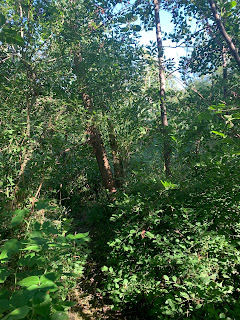July 15th marked the third and final day of our long-distance biking journey through Sweden and Denmark. We got up early and caught one of the first ferries off of the Island of Ven. Our destination; Malmö. This nearly 30-mile ride was the easiest and quite possibly the most interesting in terms of long-distance bicycle infrastructure. For most of the ride, you are fallowing a highway but rarely are you ever on the highway with your bike. In fact, nearly the rout is on a bike trail separated from the highway by plants, barriers, or both. This not only made me feel safe but it also assured me that it was most likely the fastest route because its the same as cars take.
Another thing I found very interesting was the fact that this major highway only had 2 lanes going in each direction. Obviously, in the U.S. three lanes is a common theme, but here that does not seem to be the case. I also never saw any traffic backup, this could be due to time of day, but Wally and I saw/passed a considerable amount of bikers, especially as we got closer to the city of Malmö. It left me wondering if this convenient trail had anything to do with reducing the need for three lanes as well as traffic.
Once we got to Malmö I made it a mission to find Ankarparken, a city park developed in 2001 that I have recently done a precedent study on in my Landscape Architecture studio. When I was studying the park I found the design very attractive and the ideas of things such as a bunch of mini-ecosystems which you could walk through were very intriguing. Unfortunately, when I arrived at the park (which was conveniently a few blocks from the hotel we were staying at) I was sorely disappointed. The disappointment was mainly down to the lack of maintenance the park was receiving. All of the short trails were overgrown and un-walkable, the once swimmable water was disgusting, and the prairie grass had overgrown.
This was a stark contrast to what I was seeing in Copenhagen. While in Denmark I noticed they had very well maintained parks, and even got the chance to see many of the maintenance workers. It was frustrating to see such a good idea and design such as Ankarparken go to waste as it was in Malmö. While exploring the park I only saw two other people utilizing the park, and it's hard not to think that if it was taken care of better there would be a lot more use going on.






Comments
Post a Comment